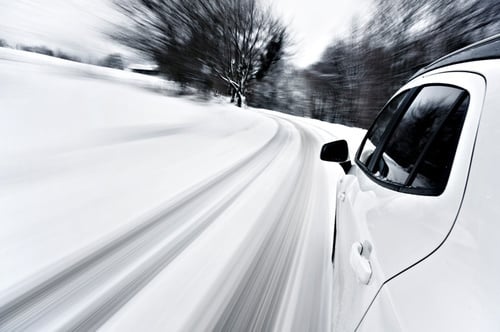

With winter well and truly upon us, many Canadians will be grumbling about snow-inspired traffic jams and treacherous commutes. Many are packing up for the Christmas holidays, ready to journey across country in icy conditions to visit friends and family.
Significant temperature variations and extreme cold conditions create volatile and dangerous conditions for drivers on the road. But there are a number of easy steps drivers can take to prepare their vehicles for the harsh winter weather.
Insurance Business caught up with Colin Asselstine, director of claims transformation and vendor management at RSA Canada, who shared some of his top tips:
Focus on the engine
When it gets cold, it’s important for drivers to make sure they check their car battery when starting up the engine. If the temperature really drops, drivers should try to focus all the power on getting the engine warm before blasting internal heating, seat warmers and windshield defrosters. This will help the car to start up a lot more effectively.
Beware windshield chips
Variations in temperature cause the glass in the windshield to become a lot more fragile, which means a small, insignificant-looking chip could quickly turn into a serious crack which requires a full windshield replacement.
At RSA Canada, we recommend that drivers take their vehicle to a repair shop as soon as there’s any trace of damage on the windshield in order to reduce the chances of needing a costlier full replacement. You can reach our glass repair experts directly at 1-888-875-3636 who will help you find the closest expert repair facility.
A windshield repair is quick, long-lasting and it’s eco-friendly. A lot of waste is created from replacing windshields that could easily have been repaired if the problem was caught soon enough.
As for insurance claims, it’s often more effective to get a windshield repair done yourself versus making a claim depending on your coverage. Auto insurance deductibles can sometimes be higher than repair or replacement costs.
Read more: What are insurance deductibles, and why does your insurance have them?
Remember the winter tire discount
In Canada, it’s always a good idea to get winter tires. In cold conditions, these tires have been proven to reduce stoppage time, which makes them a much better option in the winter. At RSA – and many other insurance companies – we offer a sizeable insurance discount of 5% for drivers with winter tires on their vehicles.
Insurance brokers need to remember this discount and communicate it to clients. It’s available to all drivers, but some people don’t apply for the discount because they haven’t let their broker or insurance company know they’re using winter tires.
Get winter wipers
Make sure your vehicle has winter windshield wipers and that your wipers are in good condition, because that can really improve your visibility on the road. Most wiper blades have an average life span of about one year, so drivers should be replacing them every six months to a year.
Drivers can easily check the health of their wipers. If the wipers leave a greasy film on your windshield, they are still in good shape. If they start to make some noise, or leave streaks against the glass, then it’s usually time for them to be replaced.
Think about rain repellent glass treatment
At RSA, we recommend drivers use an Aquapel rain repellent glass treatment, which is great for both the winter and the summer. In the summer, the water beads roll right off your windshield and in the winter, it helps by repelling some of the snow and ice from the glass. It makes it a lot easier to clean and could help to prevent damage to the windshield or wipers.
Have an emergency kit ready
An emergency travel kit is always a good idea. It’s worth keeping a shovel, a warm blanket and some non-perishable goods in your vehicle in case you get stuck somewhere. In this day and age, a phone charger would really help you out too.
Last but not least – drive carefully
When there could be black ice, we recommend drivers leave extra space and slow down. If a driver slams on the brakes and slides on black ice into another car – it’s not the ice’s fault.
All of these tips are useful, but ultimately, it’s the driver’s responsibility to drive based on the conditions on the road. Preventative measures can go a long way in maintaining safety on the road.
Related stories:
Why the human factor is crucial in catastrophe management
Minimizing losses in the BC wildfires
